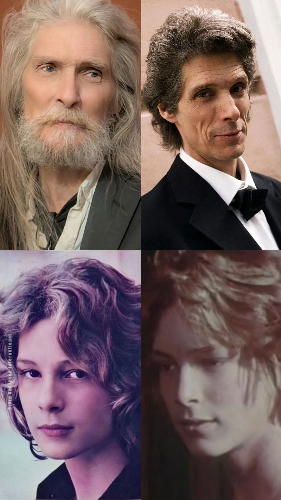
© Facebook ART & Vintage
Відомий у всьому світі завдяки ролі юного Тадзіо у фільмі «Смерть у Венеції» (1971) режисера Луккіно Вісконті, він став однією з найвпізнаваніших постатей європейського кіно 1970-х років. Його дебют у стрічці, заснованій на новелі Томаса Манна, зробив Андерсена символом краси й юності, але водночас став початком трагічної історії. За тендітною зовнішністю приховувалося складне дитинство: актор виріс без батька, а його мати наклала на себе руки. Прагнучи здійснити власні мрії, бабуся штовхнула Бйорна у світ кінематографа, де він раптово опинився під тиском світової слави. Критики називали його «найвродливішим хлопцем у світі», а режисер Вісконті вважав уособленням ідеальної краси. Проте цей образ швидко перетворився на тягар. Суспільство, що щойно відкривало для себе епоху сексуальної свободи, романтизувало його юність, не помічаючи, що перед ними — підліток, позбавлений контролю над власним образом. Його обличчя стало культовим — від модних журналів до японської манґи, яка ідеалізувала «досконалого європейця». Та за цією міфологізацією стояла особиста драма. З роками Андерсен відійшов від кінематографа, пережив втрату сина, тривалу депресію та боротьбу із залежністю. Про цю зворотну сторону слави розповідає документальний фільм «El chico más bello del mundo» («Найвродливіший хлопець у світі»), створений Крістіною Ліндстром і Крістіаном Петрі. Стрічка показує старшого Андерсена — самотнього, бідного, але все ще надзвичайно людяного. Це історія не лише про актора, а й про цілу епоху, коли краса стала товаром, а дитячі образи — інструментом комерції. Деталі смерті Бйорна Андерсена наразі не розголошуються. Представники його родини та діячі кіноіндустрії висловили співчуття, підкресливши його неповторний внесок у світовий кінематограф.
The “most handsome man in the world” has passed away — Swedish actor Björn Andersen
Known worldwide for his role as the young Tadzio in the film "Death in Venice" (1971) directed by Luchino Visconti, he became one of the most recognizable figures in European cinema of the 1970s. His debut in the film, based on the novella by Thomas Mann, made Andersen a symbol of beauty and youth but also marked the beginning of a tragic story. Behind his delicate appearance lay a difficult childhood: the actor grew up without a father, and his mother took her own life. Driven by her own ambitions, his grandmother pushed Björn into the world of cinema, where he suddenly found himself under the pressure of global fame. Critics called him "the most beautiful boy in the world," and director Visconti saw in him the embodiment of ideal beauty. However, this image quickly became a burden. Society, which was just beginning to experience an era of sexual freedom, romanticized his youth without realizing that before them stood a teenager deprived of control over his own image. His face became iconic — from fashion magazines to Japanese manga that idealized him as the "perfect European." Yet behind this mythologization lay a personal tragedy. Over the years, Andersen distanced himself from cinema, endured the loss of his son, long-term depression, and a struggle with addiction. This darker side of fame is revealed in the documentary "El chico más bello del mundo" ("The Most Beautiful Boy in the World"), directed by Kristina Lindström and Kristian Petri. The film portrays an older Andersen — lonely, poor, yet profoundly humane. It is a story not only about the actor but also about an entire era when beauty became a commodity and the image of children an instrument of commerce. Details of Björn Andersen’s death have not yet been disclosed. His family and figures from the film industry have expressed condolences, emphasizing his unique contribution to world cinema.
655